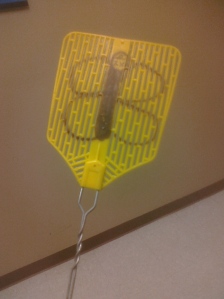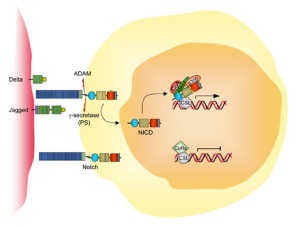Currently, there is a housefly buzzing around my head. Every single time it lands I attempt this futile clapping motion to destroy it. I fail. I fail time and time again. So, my question is, obviously, WHY CAN’T I HIT YOU!?
After a small amount of Google-sleuthing I found the answer here. It seems Drosophila contain a pair of large aptly named nerves, Giant Fiber. This bundle runs the entire length of the head and down to the thorax. At the endpoint it triggers the thoracic ganglion which then shoots elsewhere. What triggers this giant bundle to begin with? The eyes! It uses visual cues to initiate its escape sequence. I wonder why it would be associated with something like that…
 So if the Giant Fibers end with the thoracic ganglion what happens next? The ganglion shoots the signal to the dorsal longitudinal muscle (DLM) and tergotrochanteral muscle (TTM or “jump muscles”). This moves two thing: the legs and the wings. What do the legs do? JUMP! Thus, the reason they’re called jump muscles. The wings do something a little more complex. Upon receiving a signal the wings go from the closed position to the open position and slightly elevate. So really the one nerve bundle initiates a double whammy of legs and wings. The strange part is that the TTM does both of these functions. The DLM is only indirectly involved.
So if the Giant Fibers end with the thoracic ganglion what happens next? The ganglion shoots the signal to the dorsal longitudinal muscle (DLM) and tergotrochanteral muscle (TTM or “jump muscles”). This moves two thing: the legs and the wings. What do the legs do? JUMP! Thus, the reason they’re called jump muscles. The wings do something a little more complex. Upon receiving a signal the wings go from the closed position to the open position and slightly elevate. So really the one nerve bundle initiates a double whammy of legs and wings. The strange part is that the TTM does both of these functions. The DLM is only indirectly involved.
So the take away message is that a simple little pathway is why I can’t kill this damn fly.
Sidenote, the paper is a little dated as it was published in 1983 but the general workings are still the same.
*Update*




